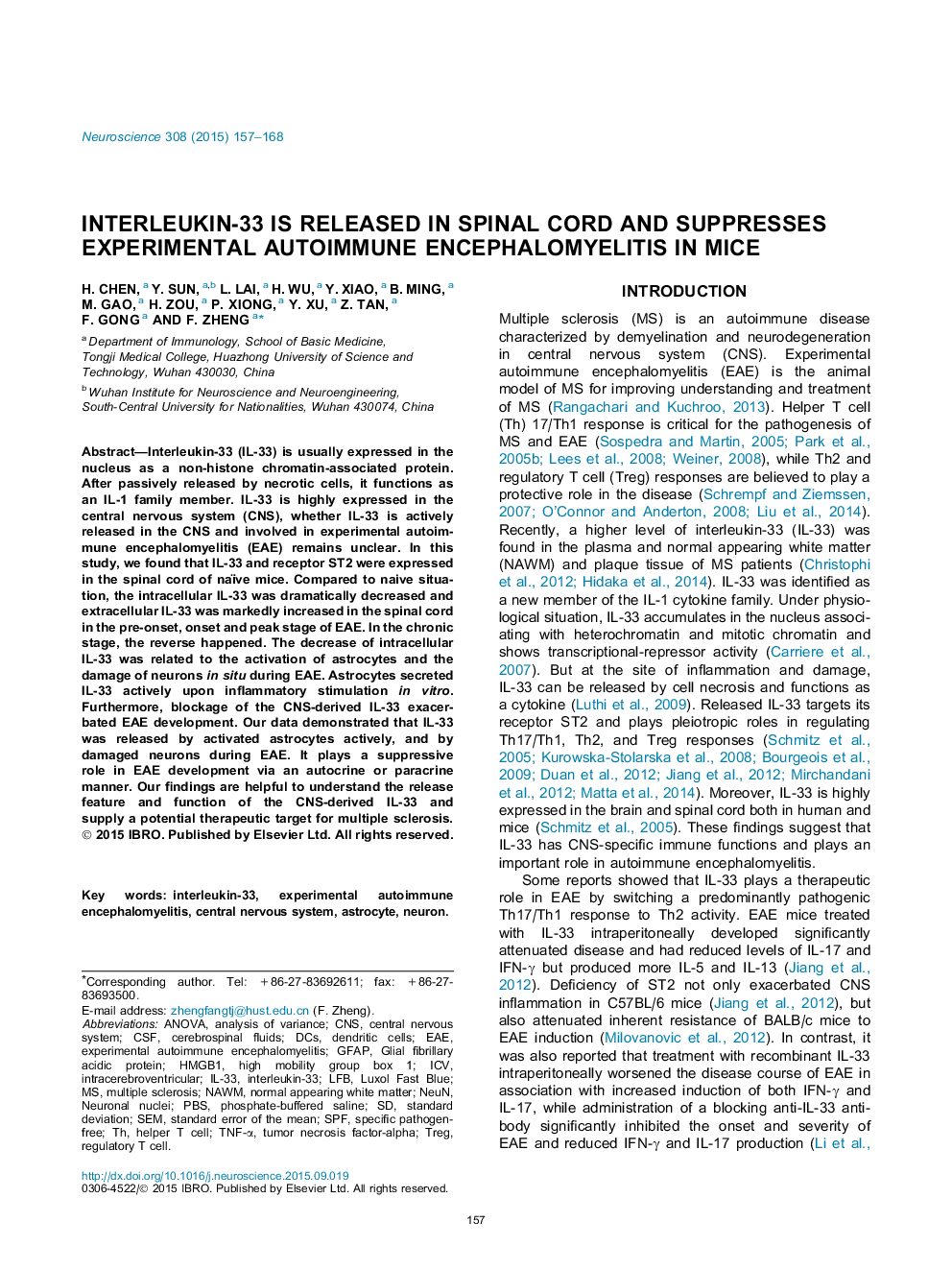| Article ID | Journal | Published Year | Pages | File Type |
|---|---|---|---|---|
| 6271912 | Neuroscience | 2015 | 12 Pages |
â¢IL-33 is released in the spinal cord during EAE.â¢Astrocytes secrete IL-33 actively upon inflammatory stimulation.â¢Blockage of the CNS local IL-33 exacerbates EAE development.â¢IL-33 is expressed both in the nuclei and cytoplasm of neurons in physiological situation.
Interleukin-33 (IL-33) is usually expressed in the nucleus as a non-histone chromatin-associated protein. After passively released by necrotic cells, it functions as an IL-1 family member. IL-33 is highly expressed in the central nervous system (CNS), whether IL-33 is actively released in the CNS and involved in experimental autoimmune encephalomyelitis (EAE) remains unclear. In this study, we found that IL-33 and receptor ST2 were expressed in the spinal cord of naïve mice. Compared to naive situation, the intracellular IL-33 was dramatically decreased and extracellular IL-33 was markedly increased in the spinal cord in the pre-onset, onset and peak stage of EAE. In the chronic stage, the reverse happened. The decrease of intracellular IL-33 was related to the activation of astrocytes and the damage of neurons in situ during EAE. Astrocytes secreted IL-33 actively upon inflammatory stimulation in vitro. Furthermore, blockage of the CNS-derived IL-33 exacerbated EAE development. Our data demonstrated that IL-33 was released by activated astrocytes actively, and by damaged neurons during EAE. It plays a suppressive role in EAE development via an autocrine or paracrine manner. Our findings are helpful to understand the release feature and function of the CNS-derived IL-33 and supply a potential therapeutic target for multiple sclerosis.
